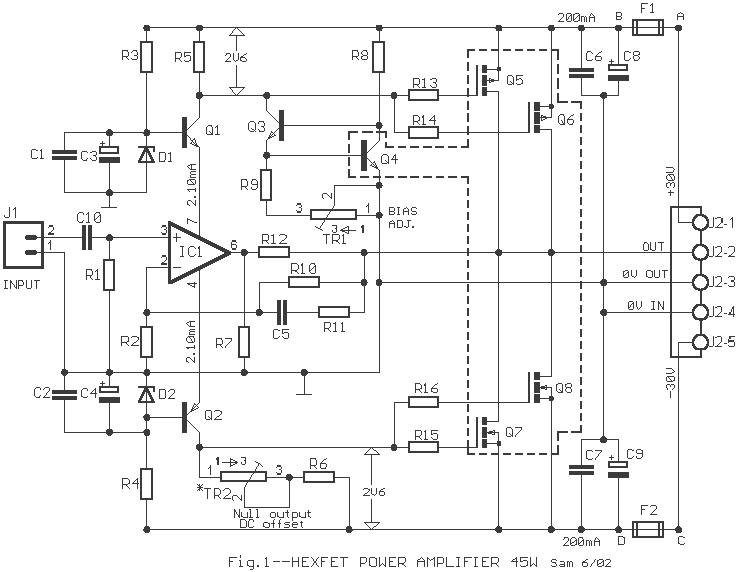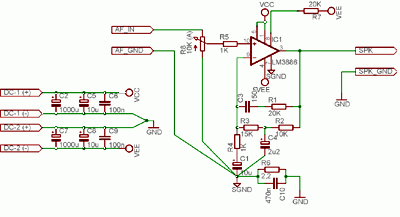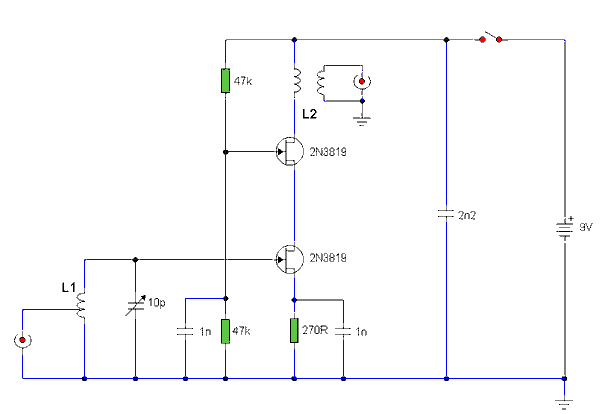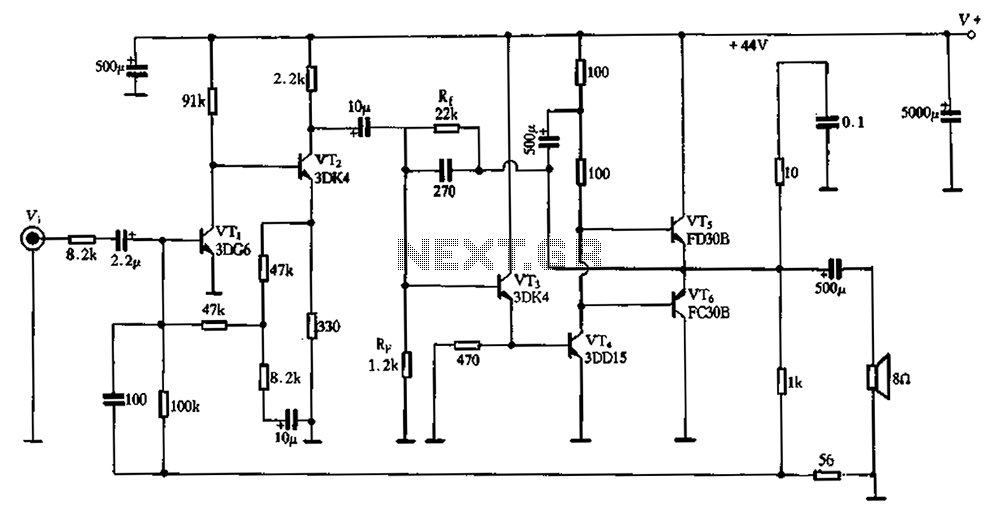
Transducer amplifier

This circuit features a high-input-impedance AC resistance of 880 kΩ and a gain of 10, utilizing an operational amplifier for a piezoelectric transducer.
The described circuit is designed to interface with a piezoelectric transducer, which generates an AC voltage in response to mechanical stress. The high-input impedance of 880 kΩ ensures minimal loading on the transducer, preserving the integrity of the signal generated. This characteristic is crucial when dealing with piezoelectric devices, as they typically produce low-level signals that can be easily affected by impedance mismatches.
The operational amplifier (op-amp) configuration employed in this circuit provides a gain of 10, amplifying the voltage signal from the piezoelectric transducer to a more usable level. The gain can be set using feedback resistors, which are critical in determining the overall performance of the amplifier. In this case, the feedback network is designed to achieve the desired gain while maintaining stability and linearity.
The circuit's design may also include additional components such as capacitors for AC coupling, which blocks any DC offset that may be present in the signal, and resistors to set the input and output impedance levels appropriately. The choice of op-amp is also vital, as it should have low noise characteristics and a suitable bandwidth to accommodate the frequencies produced by the piezoelectric transducer.
Overall, this circuit effectively amplifies the small signals generated by piezoelectric transducers, making it suitable for various applications, including sensors, actuators, and other devices that rely on mechanical-to-electrical signal conversion. Proper attention to component selection and circuit layout will enhance performance and reliability in practical implementations.This circuit is high-input-impedance ac resistance is 880 K, and a gain of 10 is ob-amplifier for a piezoelectric transducer Input tained.
The described circuit is designed to interface with a piezoelectric transducer, which generates an AC voltage in response to mechanical stress. The high-input impedance of 880 kΩ ensures minimal loading on the transducer, preserving the integrity of the signal generated. This characteristic is crucial when dealing with piezoelectric devices, as they typically produce low-level signals that can be easily affected by impedance mismatches.
The operational amplifier (op-amp) configuration employed in this circuit provides a gain of 10, amplifying the voltage signal from the piezoelectric transducer to a more usable level. The gain can be set using feedback resistors, which are critical in determining the overall performance of the amplifier. In this case, the feedback network is designed to achieve the desired gain while maintaining stability and linearity.
The circuit's design may also include additional components such as capacitors for AC coupling, which blocks any DC offset that may be present in the signal, and resistors to set the input and output impedance levels appropriately. The choice of op-amp is also vital, as it should have low noise characteristics and a suitable bandwidth to accommodate the frequencies produced by the piezoelectric transducer.
Overall, this circuit effectively amplifies the small signals generated by piezoelectric transducers, making it suitable for various applications, including sensors, actuators, and other devices that rely on mechanical-to-electrical signal conversion. Proper attention to component selection and circuit layout will enhance performance and reliability in practical implementations.This circuit is high-input-impedance ac resistance is 880 K, and a gain of 10 is ob-amplifier for a piezoelectric transducer Input tained.





